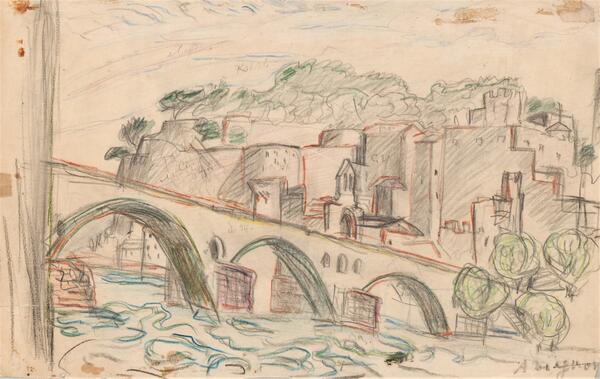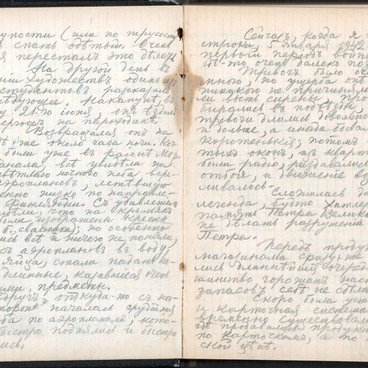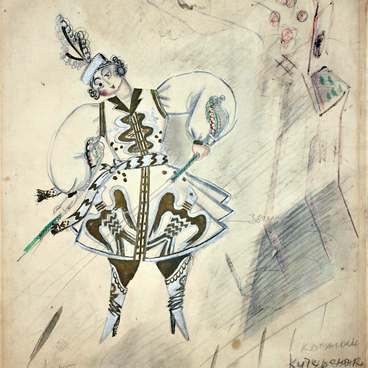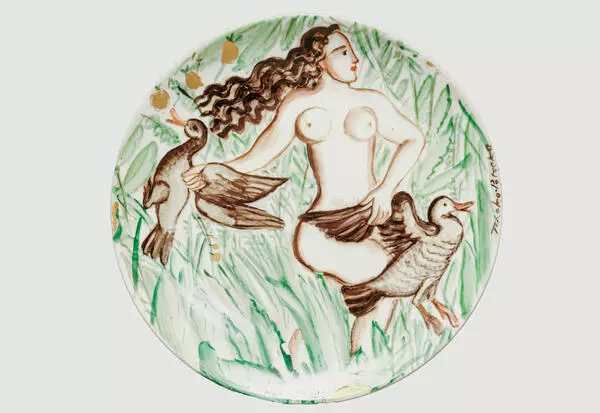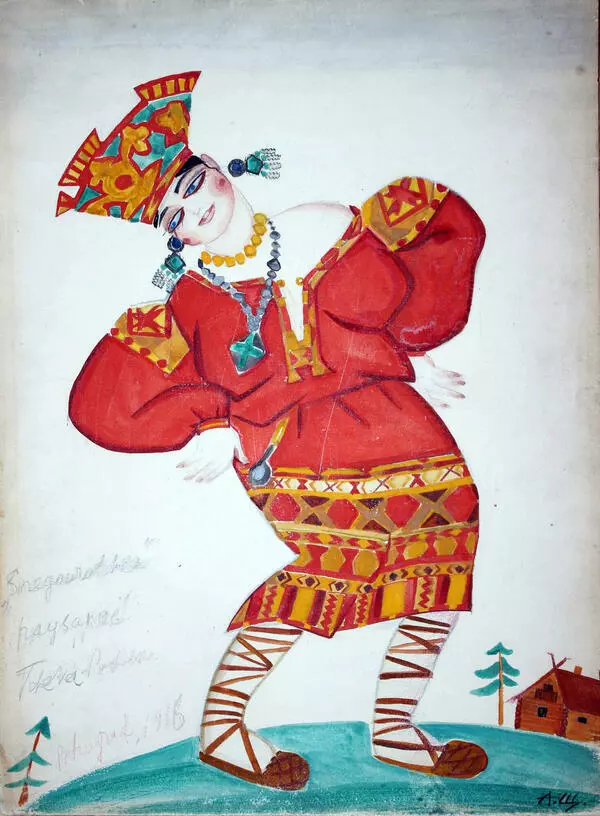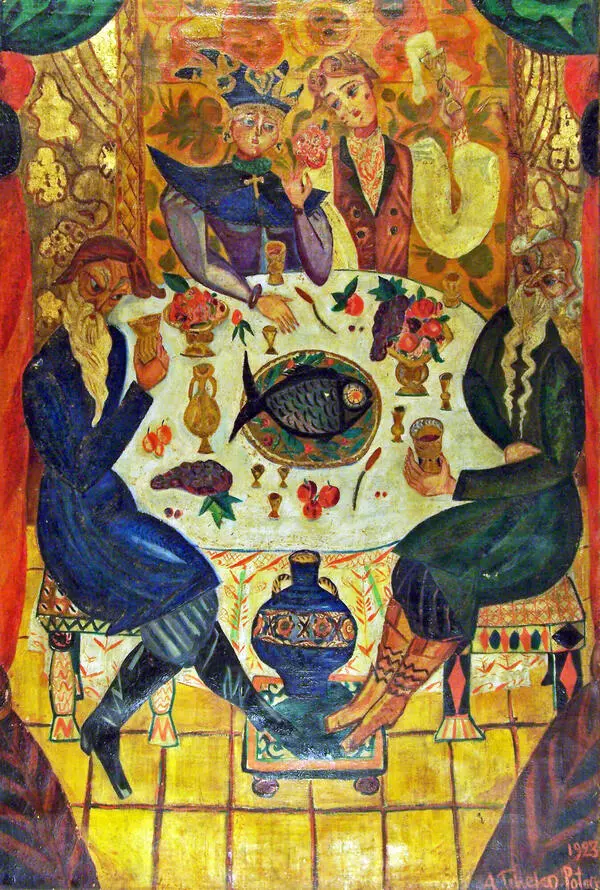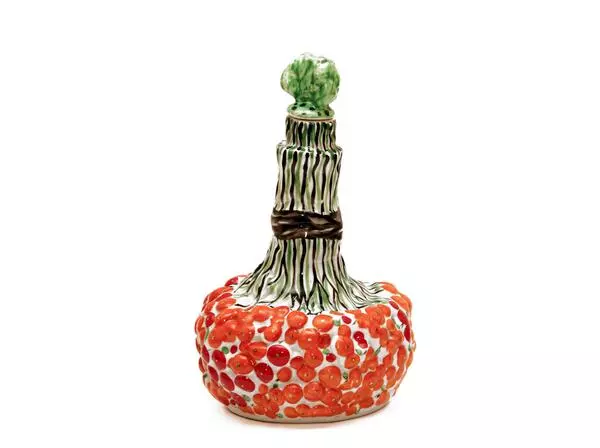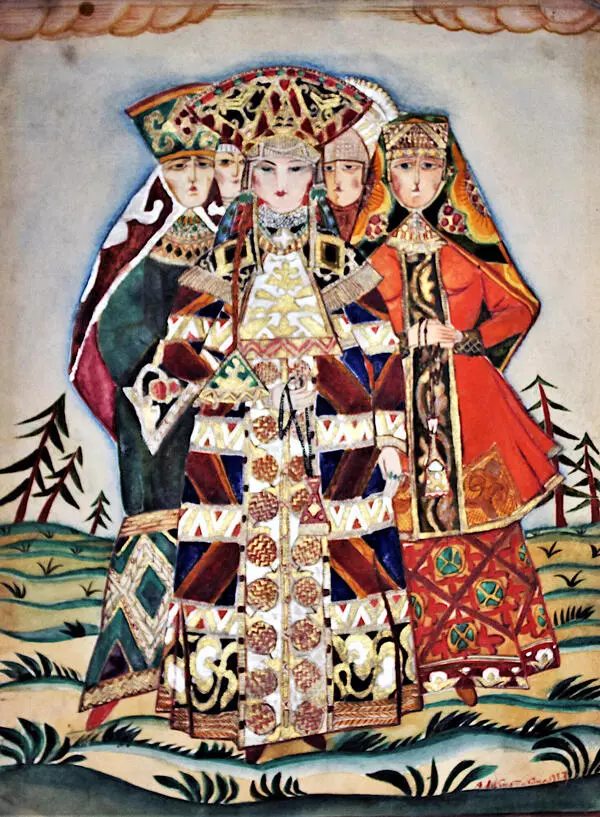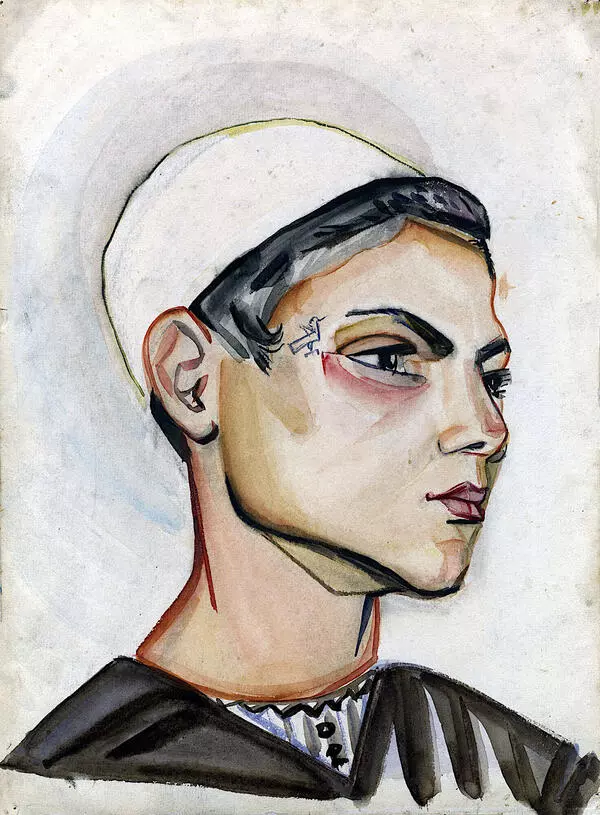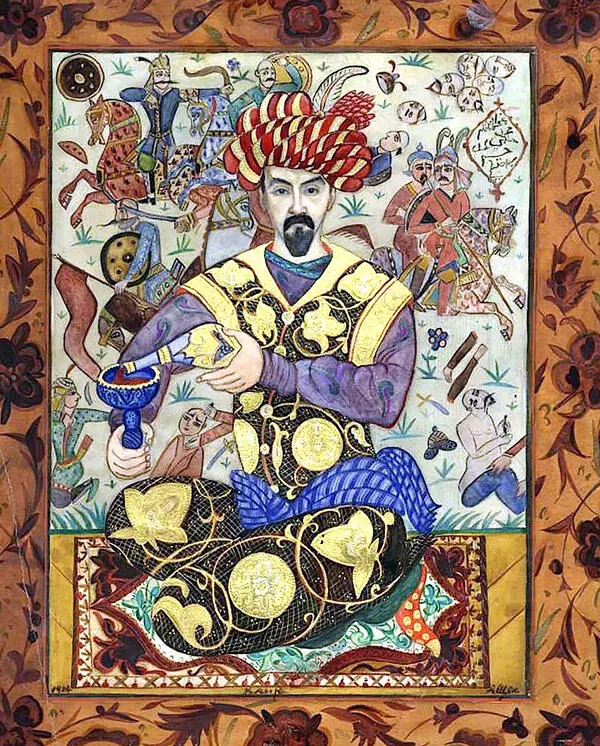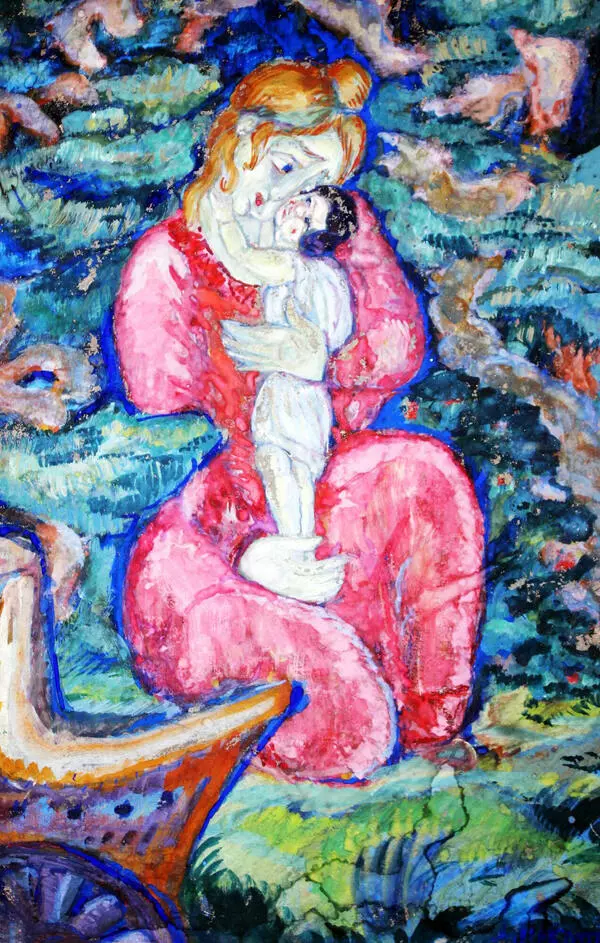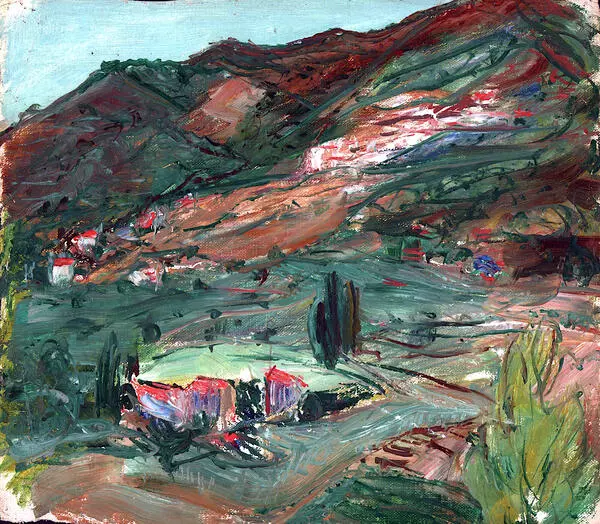The drawings of Alexandra Vasilievna Shchekatikhina-Pototskaya, the wife of the Russian painter Ivan Yakovlevich Bilibin, created en plein air, have their own character and differ significantly from her well-known sketches of porcelain painting. The drawings made during trips to eastern countries, and since 1925 and in subsequent years — to France (to Brittany, Provence, and to the southern coast), convey a lively and direct reaction to new impressions. It is evident in the nature of her pictorial diary entries which were necessary for the artist to fully perceive the previously unknown to her landscape.
Alexandra Vasilievna Shchekatikhina-Pototskaya loved to work with graphite and colored pencils, which allowed her to fix the “nowness” of what she saw. A quick stroke, not limited by a rigidly defined compositional frame, seemed to “float away” beyond the sheet’s surface, expanding the lines of the sea or sandy horizon into infinity. As a rule, the artist appreciated and cherished the open surface of the paper, which made it possible for the viewer to feel the free breath of the Mediterranean Sea in her light sketches. On some sheets, the strokes are torn in a restless rhythm, as, for example, in the image of the port embankments of Toulon, on others they rather gently “flow” in directions given by the shape of low houses hidden in thickets of fishing boats, coastal rocks, and sweeping lines.
Numerous drawings created during the summer holidays in Provence, where Alexandra Vasilievna’s family was vacationing for several years, in towns with floral names like Bormes-les-Mimosas or Le Lavandou, are distinguished by a great attention to nature. They attract the viewer with an absolute naturalness and artistry at the same time. Among the sheets, we mainly see sketches of old mighty olive trees twisted with time and constant wind, and Mediterranean pines with bushy high crowns. These two images, which were deliberately chosen by Shchekatikhina-Pototskaya from the generous abundance of southern nature, became a symbol of life, which required considerable strength and patience from the artist, an ability to maintain her creative state of mind, despite the slings and arrows of her life.
Alexandra Vasilievna Shchekatikhina-Pototskaya loved to work with graphite and colored pencils, which allowed her to fix the “nowness” of what she saw. A quick stroke, not limited by a rigidly defined compositional frame, seemed to “float away” beyond the sheet’s surface, expanding the lines of the sea or sandy horizon into infinity. As a rule, the artist appreciated and cherished the open surface of the paper, which made it possible for the viewer to feel the free breath of the Mediterranean Sea in her light sketches. On some sheets, the strokes are torn in a restless rhythm, as, for example, in the image of the port embankments of Toulon, on others they rather gently “flow” in directions given by the shape of low houses hidden in thickets of fishing boats, coastal rocks, and sweeping lines.
Numerous drawings created during the summer holidays in Provence, where Alexandra Vasilievna’s family was vacationing for several years, in towns with floral names like Bormes-les-Mimosas or Le Lavandou, are distinguished by a great attention to nature. They attract the viewer with an absolute naturalness and artistry at the same time. Among the sheets, we mainly see sketches of old mighty olive trees twisted with time and constant wind, and Mediterranean pines with bushy high crowns. These two images, which were deliberately chosen by Shchekatikhina-Pototskaya from the generous abundance of southern nature, became a symbol of life, which required considerable strength and patience from the artist, an ability to maintain her creative state of mind, despite the slings and arrows of her life.

